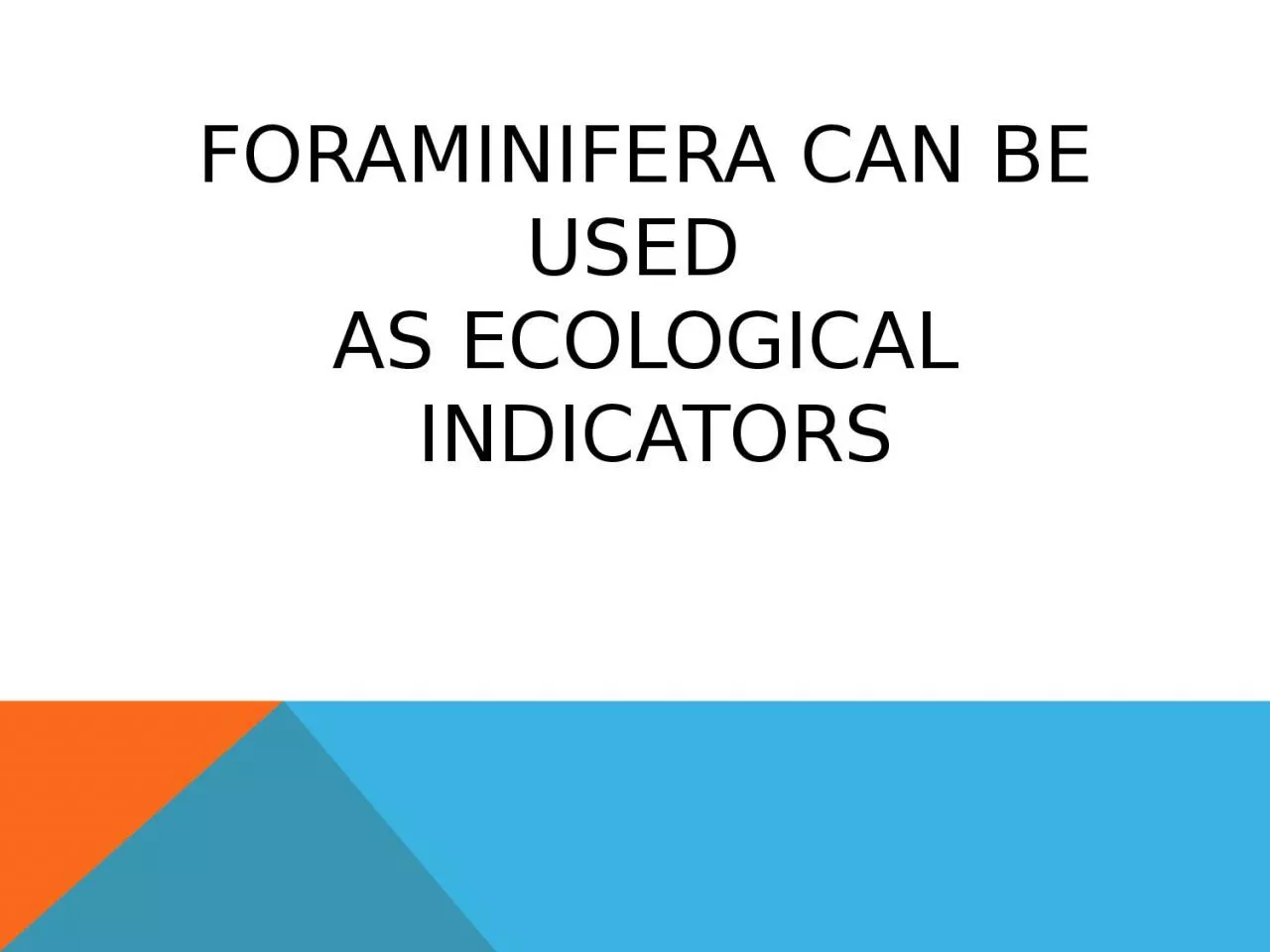

as ecological indicators 1Palaeobathymetry a Planktonic benthic PB ratio As is documented by recent studies the high occurrence of planktonic foraminifera suggests at least an outer neritic environment with water depths exceeding 150 m ID: 1010703
Download Presentation The PPT/PDF document "foraminifera can be used" is the property of its rightful owner. Permission is granted to download and print the materials on this web site for personal, non-commercial use only, and to display it on your personal computer provided you do not modify the materials and that you retain all copyright notices contained in the materials. By downloading content from our website, you accept the terms of this agreement.
1. foraminifera can be used as ecological indicators
2. 1-Palaeobathymetry
3. a-Planktonic / benthic (P/B ratio). As is documented by recent studies, the high occurrence of planktonic foraminifera suggests at least an outer neritic environment, with water depths exceeding 150 m.
4. sHALLOWDeep, bathyal environment(about 200-600 m depth
5. The increase in abundance of planktonic foraminifera (up to 70 %) proves the presence of deeper environments, which produced a sharp decrease in the level of oxygenation of the substrate. B-Benthic foraminifera dominated by calcareous taxa are indicative of a deposition floor above the calcite compensation depth (CCD).-larger foraminifer occur in the inner neritic environment.
6.
7.
8. Heterohelix2-Oxygen contentHEterohelix spp. characterise the oxygenminimum zone of a water column.
9.
10.
11.
12. 3-Temperature* Coiling direction in some species may be to the right (dextral) or to the left (sinistral). In Neogloboquadrina pachyderma coiling is sinistral when T< 9°c and is dextral when T> 15°c.
13. Ammonia spp.Life style: worldwide widespread in marginal marine environments, lives infaunal, free, at depth of 0-50m, common in sediments with mud and organ carbon. Tolerates salinities of up to 50‰, low oxygen for several days and low and high temperatures (0°C-35°C).
14. subsaline 0.5–3 ‰hyposaline 3–20 ‰mesosaline 20–50 ‰hypersaline greater than 50 ‰Hedbergella planispira
15. Deformities in benthic foraminifera
16. Test AbnormalitiesMajority of the foraminifera follow a well definedpattern to add chambers during its growth till it reaches maturity. This normal course of addition of chambers for any species, can be assessed by looking at the general population of that particular species in a region. Any deviation from this normal course of addition of chambers is termed as abnormality.
17.
18. Normal tests
19. Additional chambers
20. spiroconvex test
21. Twisted test
22. Reduced chambers
23. Deformed testsaberrant chamber size and shape
24. Twinning
25. Twinning
26. Protruding chamber
27. -Alve (1991) noted that the normal rate of abnormal tests in a non-stressed population is about 1%.-Thus a low percentage of abnormalities cannot be considered as an indicator of abnormal environmental conditions.-The morphological abnormalities include high spire giving spiroconvex test, additional chamber , twisted tests, reduced chambers , aberrant chamber shape and size, twinning , and complex deformities.
28. Deformities have been related to a number of environmental factors: (1) changes in temperature, reduced or elevated salinity, which also affects the sizeof foraminifera; (2) the lack of food, which causes aberrant growth and affects the size of foraminifera3) the type of substrate, which affects the outline and shape of foraminiferal tests; (4) low DO content, which may create dwarfed, thin-walled, less ornamented and aberrant forms; (5) insufficient light, which may affect the size of foraminifers; (6) and pollution in marine environments
29. Complex forms
30. Heavy metals are generally defined as metals with relatively high densities, atomic weights, or atomic numbers.Heavy metals are found naturally in the earth. They become concentrated as a result of human caused activities and can enter plant, animal, and human tissues via inhalation, diet
31. Heavy metals in sediment Pollution of the environment with toxic metals hasattracted considerable public attention over the pastfew decades. Heavy metals released into aquatic systems are generally bound to particulate matter, which settle down and become incorporated into sediments. Surface sediment therefore is the most important reservoir or sink of metals and other pollutantsin aquatic environments .Under favorable conditions, sediment can release pollutants causing detrimental effects to aquatic biotalong after the initial input of pollution has ceased.
32. ASSESSMENT OF SEDIMENT CONTAMINATION
33.
34.
35. 1-Contamination factors (CF)The level of contamination can be expressed by the contamination factor (CF); It was calculated as follows:Cf = (Metal content in the sediment) / (Metal content in natural reference sediment)
36. factor was classified into four groups: Cf < 1 refers to the low contamination factor; 1≤ Cf < 3 refers to the moderate contamination factor; 3≤ Cf < 6 refers to the considerable contamination factors; 6≤ Cf refers to the very high contamination factor.
37. ASSESSMENT OF SEDIMENT CONTAMINATION(Contamination indices)Back ground values
38. 3-Degree of contamination (Dc)Degree of contamination (Dc) defined as the sum of all contamination factors for a given basin.For the description of the degree of contaminationthe following terminologies have been used: Dc < 7 low degree of contamination; 7<Dc<14 moderate degree of contamination; 14≤Dc<28 considerable degree of contamination; Dc > 28 very high degree of contamination.